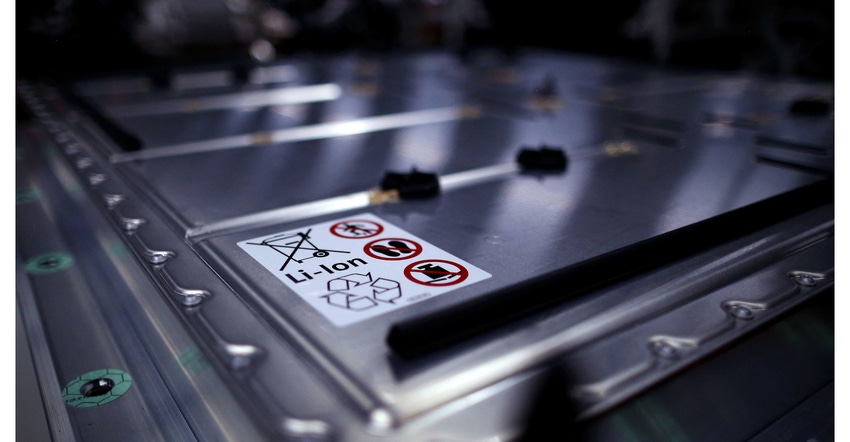5 Battery Industry Predictions
Lie Shi, CEO of AM Batteries, shares his predictions for the battery industry.

Lie Shi, CEO of AM Batteries, shared his predictions for the Lithium-ion battery industry moving forward. Shi is a battery industry veteran with more than 25 years of experience. Prior to AM Batteries, Shi was president of Celgard, a world-renowned battery separator company that invented and commercialized a solvent-free process to produce microporous membranes for lithium-ion batteries.
Prediction #1: Government Policies and Incentives
This is a key driver in building up the lithium-ion battery (LIB) supply chain in the US. Expect little stimulus out of Washington with a split Congress, except for sectors combating climate change and for semiconductors' industry. The money flowing out of the IRA, BIL, and CHIPS Act will accelerate in 2024 before the presidential election in November 2024.
“Regardless of the outcome of the election, the White House will have a new set of priorities and a new team,” said Shi. “Knowing the policy may shift or change from Jan. 2025, the administrators of IRA, BIL, etc. usually tend to allocate the funds quickly in an election year to achieve their intended purpose and to allow the policy to play out.”
Prediction #2: Circular Economy & Environmental Factors
These cannot be ignored in creating a new industry. Cleantech companies must adopt circular economy practices, focusing on resource efficiency, recycling, and reducing waste. The battery industry will recognize that one big reason LIB has not been more successful is because the process is very energy consuming, dirty (nasty solvent), and capital intensive. The industry will create more efficient and cleaner ways to make LIB in 2024.
“The dry battery electrode process will directly address those concerns since it is significantly more energy efficient, less capital intensive, and uses zero toxic solvent.” The dry electrode process provides a significant cost reduction as well as an environmental and performance advantage over conventional slurry coating methods.
Prediction #3: Electric Vehicle Market Growth
Spurred by falling battery prices, electric vehicles could hit price parity with fossil-fuel models in Europe in 2024 and the US market in 2026. For 2024, the growth of the EV market will still be there, but it may reach the inflection point, from which, the growth will be linear, rather than exponential.
“It could be a challenging year for new players entering the li-ion market and planning to build giga-factories due to competition and the tapered growth of the EV market,” explained Shi.
“Companies with strong financial backing and clear value proposition or competitive advantage, they will do well and emerge as winners. In short, we will see a more calculated and methodical approach to expansion rather than the growth at all costs mindset we’ve seen in the last few years.”
Prediction #4: Strategic Alliances and New Business Models for LIB supply Chain
Due to the complexity of Lithium battery supply, no company in the US can build giga-factories all by itself, to the extent that LGES, Panasonic, CATL has done over the last 10 – 20 years. Shi expects an emergence of the semiconductor foundry business model being applied to the LIB industry in 2024.
Shi explained that semiconductor manufacturing is analogous to battery manufacturing. “Making a commercial battery requires extreme levels of precision, reliability, and material purity. Additionally, high attention to detail and manufacturing fundamentals, such as installing robust Quality Management Systems and increasing the traceability of the manufacturing process through software integration, are critical.”
He also believes that the US needs to take the lessons learned from the scaling of the semiconductor -industry and the examples set by the major Asian battery players.
“The successful emergence of LIB manufacturing in the US will rely on a group of such innovative companies working together to cover all segments of the supply chain — some working on mining, some formulation development, some equipment, some assembly, some packs, etc. This is similar to the total separation of chip design and the actual fabrication in a semiconductor foundry business model. A few like-minded industrialists are promoting this kind of business model and I expect to see them starting to take shape in the next two years,” he said.
Prediction #5: Dry Battery Electrode
This is one impactful clean solution to make green energy. Lie expects more battery makers will jump into the space in 2024 and chase Tesla in pursuit of utilizing the solvent free electrode processing technology.
“The value of the dry electrode is exceptionally high for cell manufacturers, and we’ve seen many other established equipment manufacturers and start-ups announce DBE projects in the last 6 months. Most have announced extrusion like processes like what Tesla/Maxwell has done. From our understanding VW’s recent announcements on joint development with Koenig and Bauer AG are early stage and yet to announce the specifics of their process.
I asked Shi where he sees the Dry Battery Electrode (DBE) process in five years. He believes it will take over the LIB world by 2030. DBE is a manufacturing process and is applicable for all chemistries — Si-anode, Solid-state batteries, Li-ion or Na-ion batteries.
Shi also said that zinc has very little chance in automotive due to its low efficiency and short cycle life.
AM Batteries is a pioneer in lithium-ion dry-electrode technologies. The company's process reduces CO2 emissions and operational energy by 40%, which is a great benefit for a growing EV market.
About the Author(s)
You May Also Like




